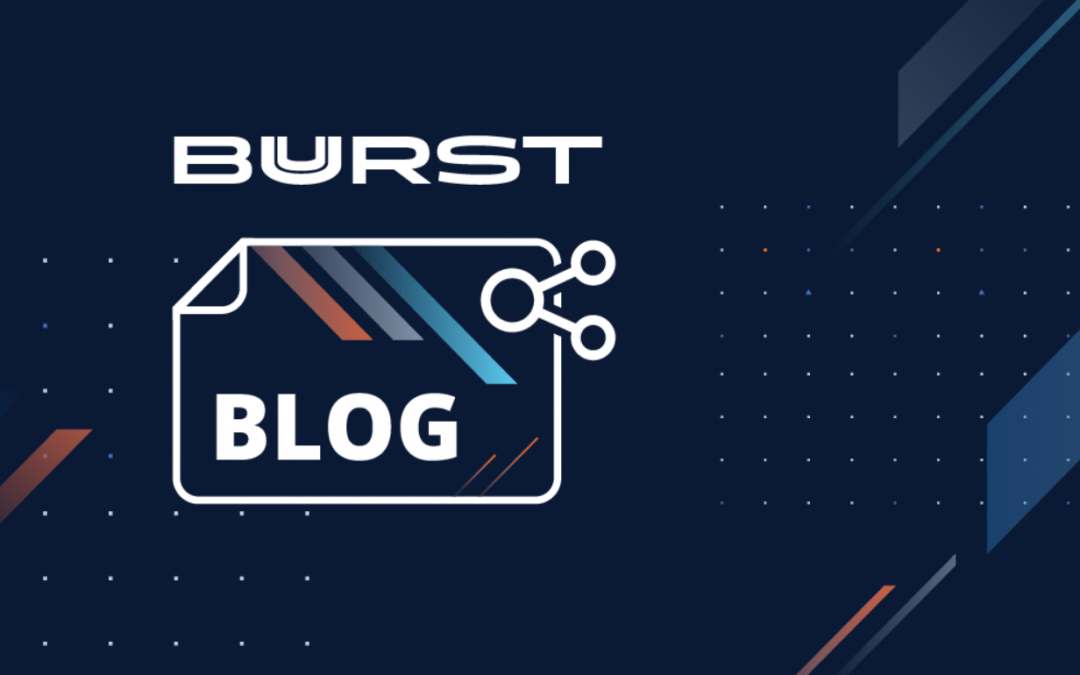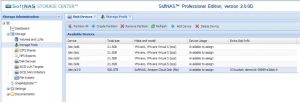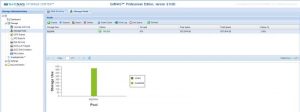by Buurst Staff | DevOps, Features, Latest News, News Releases
SoftNAS has released the first cloud computing storage API and CLI for DevOps teams using Amazon’s EC2 and VMware platforms.
SoftNAS adoption on cloud computing platforms, like Amazon Web Services’ EC2 platform, has been steadily accelerating through Q4 2013 and early here in 2014. One of the things we’re seeing more and more are DevOps organizations in larger companies adopting SoftNAS. As a result, more development shops are looking to incorporate SoftNAS into their entire DevOps process – from Development all the way through QA Test and into Production as a common storage platform.
At the same time, DevOps is automating everything possible, including deployment of the IT infrastructure, to create truly “elastic” systems that expand to deal with demand on the fly during peak periods of traffic, then automatically contract down during non-business hours to minimize operating costs. This is the promise of the cloud – get as much capacity as you need, when you need it, and only pay for what you use. At the same time, the ability to quickly spin up a new QA test or development system makes agile development and testing more efficient and less labor-intensive.
Given that shared storage is a key part of the IT infrastructure for cloud computing, a way to include SoftNAS in CloudFormation templates, Auto-scaling groups, and other cloud computing automation systems is critical, especially for Amazon Web Services customers.
To meet these demands of DevOps and cloud computing operators, SoftNAS has introduced the first cloud storage API and CLI for its flagship SoftNAS product line. The API provides access to the same robust storage administration and management functionality provided by the SoftNAS StorageCenter GUI, through REST API calls and a simple command-line interface.
The API and CLI support adding EBS and S3 cloud disk devices to SoftNAS, creating and expanding storage pool capacity on the fly, adding new volumes and making them available as NFS and CIFS shares – without direct human intervention. In fact, 95% of everything that can be done via the StorageCenter GUI can now be accomplished using the API or CLI, as well. And the API and CLI are available across all SoftNAS supported virtualization platforms, including AWS and VMware.
This makes SoftNAS the obvious best choice as the cloud computing storage platform for DevOps teams.
Read more about the API and CLI here
by Buurst Staff | Features, Latest News, News Releases
SoftNAS adoption on Amazon Web Services’ cloud platform has been steadily accelerating through Q4 2013 and early here in 2014. One of the things we’re seeing more and more are DevOps organizations in larger companies adopting SoftNAS. As a result, more development shops are looking to incorporate SoftNAS into their entire DevOps process – from Development all the way through QA Test and into Production as a common storage platform.
At the same time, DevOps is automating everything possible, including deployment of the IT infrastructure, to create truly “elastic” systems that expand to deal with demand on the fly during peak periods of traffic, then automatically contract down during non-business hours to minimize operating costs. This is the promise of the cloud – get as much capacity as you need, when you need it, and only pay for what you use. At the same time, the ability to quickly spin up a new QA test or development system makes agile development and testing more efficient and less labor-intensive.
Given that shared storage is a key part of the IT infrastructure for cloud computing, a way to include SoftNAS in CloudFormation templates, Auto-scaling groups and other cloud computing automation systems is critical.
To meet these demands of DevOps and cloud computing operators, SoftNAS has introduced the first cloud storage API and CLI for its flagship SoftNAS product line. The API provides access to the same robust storage administration and management functionality provided by the SoftNAS StorageCenter(tm) GUI, through REST API calls and a simple command line interface.
The API and CLI support adding EBS and S3 cloud disk devices to SoftNAS, creating and expanding storage pool capacity on the fly, adding new volumes and making them available as NFS and CIFS shares – without direct human intervention. In fact, 95% of everything that can be done via the StorageCenter GUI can now be accomplished using the API or CLI, as well. And the API and CLI are available across all SoftNAS support virtualization platforms, including AWS and VMware.
This makes SoftNAS the obvious best choice for cloud computing storage platform for DevOps teams.
Read more about the API and CLI here

by Buurst Staff | AWS, Features, Latest News
We are wrapping up QA on a major new feature of SoftNAS – the Amazon S3 Cloud Disk. These cloud disks extend SoftNAS storage to include virtually unlimited, inexpensive cloud disk storage using Amazon’s venerable S3 storage backbone. This is a big deal for our customers who need large amounts of affordable cloud storage.
Here’s how it works.
First, you open an Amazon Web Services account. Next, you install SoftNAS (available in the AWS Marketplace, free micro instance), SoftNAS Essentials or SoftNAS Pro. Note that the S3 Cloud Disks can be used on-premise running on VMware, or in the cloud within any of the AWS regions worldwide.
Next, you simply add a new S3 Cloud Disk to your SoftNAS installation, which appears in the list of available disk devices as shown below:

In this example, we have created a 500 TB cloud disk, which is thin-provisioned, so it only takes up actual storage space as you use it.
Next, a storage pool is created using the Amazon S3 Cloud disk, as we see below:

You now have up to 500 TB of cloud storage at your fingertips. And it includes all the SoftNAS feature set, including caching, compression, deduplication, scheduled snapshots, etc. – all on top of S3. By itself, S3 storage may not be fast enough for some use cases, especially when running it in a colo or company-owned data center; however, with SoftNAS acting as the NAS ‘front end’ to S3, you can now get the best balance of performance and long-term data durability provided by S3.
And if you’re running S3 Cloud Disks on SoftNAS directly within Amazon EC2, then you’ll get the best performance as everything is running together in the cloud.
More on this exciting new cloud storage feature of SoftNAS will be coming soon. You can see it in action in our booth at AWS re:Invent, November 12 – 15 in Las Vegas. Of course, it will be available for download at that time, as well.
by Buurst Staff | Features, Latest News
We reached an important milestone today with the SoftNAS Beta release.
Based on our QA testing results, the Beta is very solid on VMware and Amazon EC2.
The VMware ESXi platform, which we use in development and day to day operations with SoftNAS, is solid as a rock – as usual. We see throughput up to line speed between the SoftNAS storage server and workload servers. VMware continues to be the leading hypervisor for premise-based, enterprise deployments for good reason – it’s mature, robust and just works.
For the first time, we now support SoftNAS across all of the standard Amazon EC2 regions (except for Sydney, which is relatively new and will come later). SoftNAS for EC2 is now available on these Amazon Machine Images (AMI):
ami-6df27104 – US East (N. Virginia)
ami-a443cb94 – US West (Oregon)
ami-aec6e7eb – US West (California)
ami-d6c3cea2 – EU (Ireland)
ami-cedc9f9c – Asia Pacific (Singapore)
ami-d066ded1 – Asia Pacific (Tokyo)
ami-92d30b8f – South America (Sao Paulo)
Deployment on EC2 is super-fast and easy – on the order of several minutes to spin up a new SoftNAS instance! Amazon makes this process extremely easy and productive. We observed good performance, up to 100 MB/sec (line speed), on basic EBS volumes with SoftNAS cache memory. Best of all, there’s no hardware to mess with – just point, click, deploy and go! And EC2 is solid as a rock, performing flawlessly in all our tests.
This release includes iSCSI target and initiator support. Setting up iSCSI targets and connecting to them from Windows Servers, Unix servers and VMware ESXi worked flawlessly and performed as expected, as well.
This release also introduces scheduled snapshots – hourly, daily and weekly snaps. There’s a new snapshot control panel that displays the snapshots for each volume (or all volumes at once). Snapshots can be cloned into writable volumes with the push of a button.
The release notes provide a more complete list of features and fixes in this release.
Behind the scenes, we’ve been busily working with a number of early adopters with some very interesting projects and use cases. We are very excited about the GA release of SoftNAS, which will be the same run-time image for all the platforms, with a few added features like SnapReplicate and a few others.
Okay – time for a brief break to recover from the march to release day this week for me… then back into the salt mines to develop the last major feature for version 1 – SnapReplicate. I’m very excited about SnapReplicate – it’s going to make it super-easy to configure SoftNAS for redundancy and failover.
Onward!



